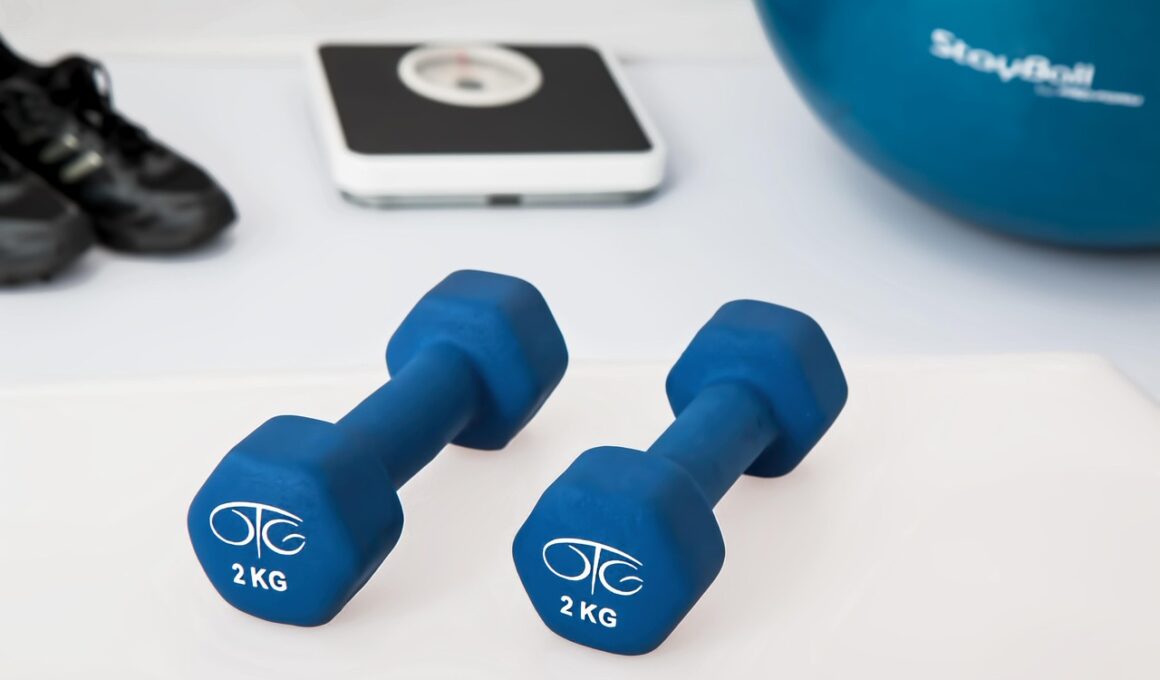Best Practices for Maintaining Correct Posture During Rehab Exercises
Correct posture during rehabilitation exercises is vital for effective recovery and injury prevention. Poor posture can lead to increased pain and strain, making rehabilitation ineffective. To maintain proper alignment, always start with your feet shoulder-width apart to create a stable base. Keep your shoulders relaxed and back, avoiding any slumping. Your spine should be in its natural curves; ensure that your neck aligns with your shoulders and hips. Engaging your core muscles is essential for stability and support, thereby enhancing overall posture. Pay attention to the position of your knees; they should be aligned over your ankles to prevent unnecessary strain. Avoid locking your joints, which can cause tension and discomfort. Additionally, the use of props such as exercise balls or cushions can help achieve better alignment in various exercises. Regularly check in with your posture throughout each exercise session, adjusting as needed to maintain alignment. Finally, consultation with a physical therapist is advisable in learning personalized techniques tailored to your specific rehabilitation needs, ensuring an effective recovery process while maintaining a strong emphasis on posture.
Importance of Ergonomics in Rehab Settings
Understanding ergonomics is essential for optimizing recovery during rehabilitation exercises. Ergonomics involves designing a workspace, movements, and practices that minimize strain on the body. In a rehab setting, this means tailoring exercises to fit individual needs while using the correct body mechanics during activities. For instance, select equipment that supports your body naturally, such as ergonomic chairs or adjustable tables. The placement of tools and supplies should encourage a natural reach, reducing unnecessary movements that can lead to poor posture. Additionally, ensure that the surfaces you work on are at an appropriate height to maintain a neutral position in your arms and shoulders. Regularly adjusting your position and frequently taking short breaks can also help prevent fatigue and maintain focus on posture. Encourage open communication with your therapist regarding any discomfort experienced during exercises. They may suggest modifications to enhance ergonomics and make exercises more comfortable and effective. By prioritizing ergonomics, individuals can significantly improve their outcomes during rehabilitation, leading to a safer, more productive journey toward recovery.
Incorporating stretching into your rehabilitation routine can improve posture. Stretching flexibility increases range and helps to relieve muscle tightness. Stretching regularly allows muscles to remain supple and reduces the risk of injuries during exercises. Focus on key areas that often contribute to bad posture, like the chest, shoulders, and hips. Simple stretches can be done in recovery sessions, alleviating tension in these areas. A chest opener stretch can alleviate tightness from slumping shoulders, promoting proper alignment. Hip flexor stretches are beneficial as they counteract the effects of prolonged sitting. Additionally, incorporating a variety of stretching exercises can help address specifically tight muscle groups. Use foam rollers for myofascial release, which can enhance circulation and adapt flexibility. Notably, incorporating some yoga poses can also be tremendously beneficial in improving posture and flexibility. For example, poses such as the Cat-Cow stretch provide an excellent balance between dynamic movement and scalability. Before starting stretching sessions, consult with a rehabilitation specialist to ensure safe execution tailored to your specific rehabilitation needs.
Mindfulness in rehabilitation exercises helps in maintaining correct posture. Position awareness cultivated through mindfulness promotes better focus on body alignment during movements. Incorporating mental techniques, such as visualization, can prepare the mind for the exercises ahead. By clearly imagining the posture and movements, practitioners can reinforce proper body mechanics before initiating an activity. Additionally, use body scanning techniques to evaluate your posture consistently. Being mindful of how your body feels during exercises can lead to adjustments that improve alignment. Fostering a positive mindset can also encourage perseverance in maintaining correct posture throughout any rehabilitation process. Establishing a consistent practice encourages you to engage in self-checks regarding body position. Remind yourself to breathe deeply and maintain calm during rehab sessions; this enhances overall focus and effectiveness. Regularly practicing yoga or tai chi can develop a sense of body awareness, promoting better posture during rehabilitation. Discuss mindfulness strategies with a rehabilitation expert to assess how they can fit into your specific goals and needs during the rehabilitation journey.
In addition to mindfulness, proper breathing techniques can aid in maintaining good posture during rehabilitation. Breathing deeply allows the body to engage core stabilizers effectively, directly influencing posture. Proper breath control can help facilitate relaxation and positive body awareness, improving overall alignment. Start with diaphragmatic breathing, where the abdomen expands with each inhalation. This helps prevent unnecessary upper chest tension, promoting a relaxed posture. As you practice, couple breathing with movements to enhance the fluidity of exercises. Coordinate exhale during exertion and inhale during relaxation for better stability. While executing movements, pay attention to maintaining an elongated spine. To build a stronger connection between breath and body, consider utilizing specific breathing patterns suited to your activities. This foundation establishes a rhythm that can support other techniques aimed at posture enhancement. As breathing becomes a regular part of your practice, it promotes mindfulness, ensuring you remain aware of your body’s alignment throughout rehabilitation. Remember to consult your therapist before implementing breathing techniques to tailor them according to your situation.
Engaging in strength training can further bolster your efforts in maintaining correct posture during rehabilitation exercises. By enhancing muscle strength, you can provide better support to your spine and joints. A strong core is crucial for promoting proper alignment and providing stability during various movements. Many rehabilitation programs incorporate resistance training to complement passive rehabilitation methods, fostering a well-rounded approach. Focus on targeting key muscle groups, including the abdominals, back, and shoulders, to support your overall posture. Incorporating exercises like planks, rows, or bridges can effectively enhance your muscular endurance. These exercises can prepare your muscles for everyday activities, promoting natural body movements that encourage good posture. Ensure to adjust weights or resistance to match your current strength levels, emphasizing quality over quantity. It’s essential to maintain proper form while executing each exercise to prevent discomfort or strain. Finally, if unsure about how to begin a strength training program, seeking guidance from a qualified professional can ensure a safe and effective regimen tailored to your recovery needs.
Finally, regular evaluations of your postural alignment during rehabilitation exercises are crucial. Continual assessment ensures that the methods and processes you use remain effective. Your therapist can offer insights on posture corrections, monitoring your progress over time. Record any discomfort or pain experienced during exercises, noting specific movements that may result in misalignment. Use this information to discuss with your therapist, refining your approach to proper posture. Equipment adjustments may be necessary as well; ensure ergonomic settings remain suited to your size and exercises. Use video recordings of your performance to analyze alignment, identifying areas needing improvement. Consulting additional resources or workshops on posture can further enhance your understanding. Don’t hesitate to seek peer support or group therapy sessions to share insights about maintaining proper posture among individuals with similar rehabilitation goals. Adopting a team approach nurtures motivation and accountability. Ultimately, by focusing on consistent evaluations and practicing these methods, you can better align your posture throughout your rehabilitation journey, setting a solid foundation for successful recovery.


